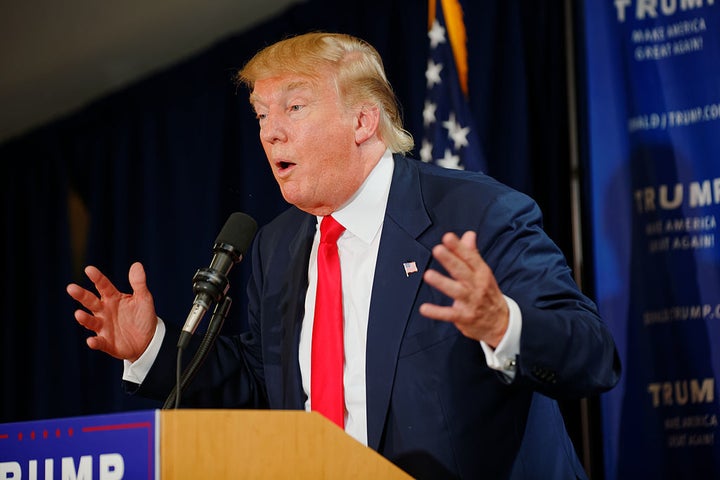
The bait and switch: it’s one of the oldest tricks in politics—one of the oldest tricks in life. It’s a fundamentally dishonest ploy, and typically appeals to vulnerable people’s most base instincts in order to get them to, as the term suggests, take the bait. Donald Trump is a master at it.
Trump’s Electoral College victory relied heavily on support from white working-class voters. According to data from the Voter Study Group analyzed by Lee Drutman, Trump won 27 percent of the “populists”—people who are economically left-of-center, i.e. supporters of social spending in general, but conservative on racial and cultural identity issues—who had voted for Barack Obama four years earlier. Furthermore, 14 percent of these Obama-voting populists picked a minor party candidate in 2016. Hillary Clinton won only 59 percent of the populists who went for Obama. On the flip side, Trump held on to 93 percent of the populists who had voted for Mitt Romney, and almost none went to Sec. Clinton, while Trump won 43 percent of the populists who had voted for a minor party candidate in 2012. Clinton won only 15 percent of them, and the rest went to other candidates.
Trump got these populist Obama supporters to vote for him by appealing to their racial and cultural identity issues, while at the same time reassuring them that he would not be a typical Republican who favored the rich by promising more infrastructure spending than his Democratic opponent, taking a hard protectionist stance on trade, etc. How do we know the latter worked? Obama-Trump voters told us so. They clearly identified Trump as a different kind of Republican—only 21 percent of them said his economic policies would favor the rich, while 40 percent of them said Congressional Republicans would, and 42 percent said Congressional Democrats would (it wasn’t either/or, each respondent was asked about all three separately). As Jamelle Bouie noted: “For the first time in recent memory, populist voters didn’t have to prioritize their values. They could choose liberal economic views and white identity, and they did.”Obama-Trump voters are not the only voters worth going after. I am using them here as a proxy for people who voted for Trump but who are absolutely gettable votes for Democrats. Trump sold them a bill of goods, and he has not delivered. However, with a number of policies put forth in just the past week, he is doing his best to re-sell them all over again.
After Democrats recently issued their “Better Deal” plan, a set of proposals aimed directly at the wallets of Americans struggling to make ends meet, the Trump White House knew what it had to do. He couldn’t tout any populist economic policies he’d enacted—because no such policies exist.
The most substantial policy he’d gotten behind as president has been a Republican-only health care plan that would result in tens of millions losing their health coverage in order to pay for a tax cut for the wealthiest. The various Trumpcare plans were so unpopular—even 60 percent of Republicans disapproved of their party’s handling of the issue according to a recent Quinnipiac poll—in large part because the American people saw them, to paraphrase Hillary Clinton, as right-wing, trickle-down economics on steroids. The same goes for his official tax plan, cooked up in partnership with the Koch Brothers. On trade, he’s passed nothing and hasn’t even made progress toward any kind of change. How about that $1 trillion infrastructure plan? Nothing there either.
So what did Trump do this past week? He brought out cultural wedge issues all over the map. Some, like his hare-brained, half-witted “announcement” banning transgender Americans from serving in the armed forces, were aimed at the religious conservatives who are his most loyal true believers. Other proposals, i.e., those seeking to counter affirmative action and to restrict immigration—in part by giving a preference for those who already speak English—are right in the sweet spot of white cultural and racial anxiety.
Finally, although it wasn’t a formal proposal, Trump’s truly sickening remark—it was no joke, as Jelani Cobb explained—encouraging police to abuse suspects upon their arrest was another dog whistle aimed at those “law and order” enthusiasts who rallied behind him in 2016. Importantly, police pushed back hard against Trump’s suggestion. Additionally, on July 26, in Youngstown, Ohio, Trump also used graphic, inflammatory language in describing violent crimes committed by those here illegally, without citing any specifics about where such a thing happened:
And you’ve seen the stories about some of these animals. They don’t want to use guns because it’s too fast and it’s not painful enough. So they’ll take a young, beautiful girl, 16, 15, and others, and they slice them and dice them with a knife because they want them to go through excruciating pain before they die.
In other words, it was a banner week for Steve Bannon and his ally in white nationalism, Attorney General Jeff Sessions. Alex Shephard wrote at the New Republic that these types of actions reflect Trump’s declaration of an “all-out culture war.” Trump understands that if the next election is fought over economic issues, Democrats will do much better than if it is fought over non-economic issues—especially now that he’s been exposed as just another Republican on economics. GOP economic policies are harmful to the majority of Americans, and a majority of Americans know it.
Democrats need to force the Obama-Trump populists, and other voters who are reachable on economic issues, to do what Bouie said they didn’t have to do in 2016, namely choose between a party who will not help their family’s bottom line and a party that has and will continue to do so.
Even more than that, Democrats must emphasize that Trump pushes those racially divisive issues specifically because his actual economic plans won’t help them. Let’s talk about that immigration proposal, for example. He claims it will help American workers, but actual evidence demonstrates that it will do the opposite. UC Davis economist Giovanni Peri summed it up thusly: “the average American worker is more likely to lose than to gain from immigration restrictions.”
Trump’s immigration restriction plan has no chance of getting through a Congress where enough members of the Republican majority still have their bread buttered by corporate interests that rely on cheap, unskilled labor. The plan is merely an attempt at distraction, another bait and switch—just like the Mexican wall Trump made a central selling point to voters for more than a year before admitting within days of taking office that it was “the least important thing,” although “politically it might be the most important.” Of course, Trump never meant the American people to hear that truthful admission.
Trump’s economic policies are simply old-fashioned Republican ones, through and through. They will send wealth up the chain while the middle and working classes suffer. Even on the racially and culturally divisive issues he pushes to distract from that fact, Trump cares much more about politics than actually delivering. Democrats must make sure voters understand that.
